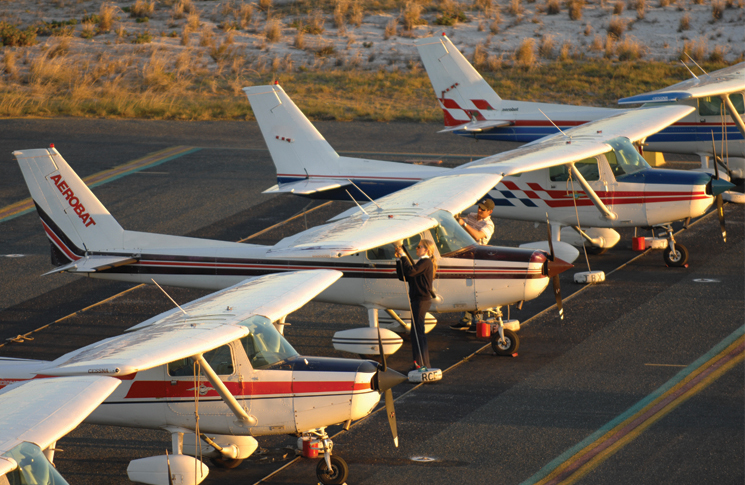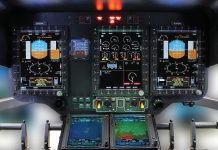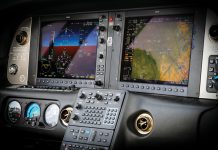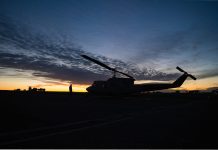How well do you know aviation and aviation safety? Test your knowledge with the CASA quizzes.
1 When a low pressure system is present over the Tasman Sea and there is a high pressure system over the Bight, the two systems combine to produce:
(a) strong northerly winds over southern Australia
(b) strong south westerly winds over southern Australia
(c) strong westerly winds over southern Australia
(d) a col resulting in light and variable winds between the two systems.
2 When a pilot discovers a defect in an aircraft, details of the defect should be noted in the column of the Maintenance Release document headed:
(a) Maintenance required
(b) Endorsements
(c) Daily inspection
(d) Permitted unserviceability.
3 As the water vapour in the atmosphere increases, the density of the air:
(a) decreases
(b) increases
(c) remains the same
(d) increases until precipitation occurs.
4 A possible cause of relatively sudden incapacitation of a flight crew is:
(a) chronic fatigue
(b) heatstroke
(c) dehydration
(d) food poisoning.
5 The ‘leans’ is a condition encountered in instrument flying which is initiated where:
(a) a rate of roll is below the threshold of detection by the vestibular system
(b) a low rate of yaw is not detected by the vestibular system
(c) an inexperienced pilot attempts to keep the head vertical during a turn
(d) longitudinal acceleration is mistaken for a descent.
6 When tracking north in a westerly wind, the balance ball:
(a) will be slightly to the left and left drift will be experienced
(b) will be slightly to the left and right drift will be experienced
(c) should be centred and right drift will be experienced
(d) should be centred and left drift will be experienced.
7 During a landing with a right crosswind, ‘weathercocking’ can occur:
(a) either on the ground or airborne and will result in yaw to the right
(b) either on the ground or airborne and will result in yaw to the left
(c) only when on the ground and will result in turn to the right
(d) only on the ground and will result in turn to the left.
8 You wish to steer a heading of 120 (m) and notice on the compass deviation card FOR 120 STEER 124. To correct for the compass deviation, you should set the directional gyro to:
(a) 124 (m) when the magnetic compass indicates 120 (c)
(b) 124 (c) when the magnetic compass indicates 120 (m)
(c) 120 (c) when the magnetic compass indicates 124 (m)
(d) 120 (m) when the magnetic compass indicates 124 (c).
9 Unstable atmospheres are associated with:
(a) cumuliform clouds and large temperature lapse rates
(b) cumuliform clouds and small temperature lapse rates
(c) stratiform clouds and large temperature lapse rates
(d) stratiform clouds and small temperature lapse rates.
10 If the aerodrome elevation was 300 feet and, with 1013 HPA set on an altimeter subscale, the altimeter reading was zero when the aircraft was on the ground, the QNH would be:
(a) 1023 and the pressure height would be zero feet
(b) 1023 and the pressure height would be 300 feet
(c) 1013 and the pressure height would be zero feet
(d) 1003 and the airfield pressure height would be 300 feet.
11 When flying from a high to a low-pressure area, the altimeter will:
(a) under-read and terrain clearance will be increased
(b) under-read and terrain clearance will be reduced
(c) over-read and terrain clearance will be increased
(d) over-read and terrain clearance will be reduced.
12 When taxiing with the aircraft nose wheel exactly on the yellow line, you are concerned about the impact of the wheel on the taxiway lights. In such a case, the appropriate action would be to:
(a) keep the nose wheel on the centreline but reduce the taxi speed as much as possible
(b) swerve slightly to miss each light
(c) move the aircraft to the right because the yellow line is actually a pilot position line and not a nose-wheel line
(d) move the aircraft to the left by the minimum amount to clear the line.
13 Compared to a nose-wheel aircraft, a tail-wheel aircraft:
(a) is directionally unstable on the ground because the wheels are positioned behind the centre of gravity
(b) is directionally unstable on the ground and in the air because the wheels are positioned ahead of the centre of gravity
(c) is directionally unstable on the ground and if, on landing, the main wheels touch before the tailwheel, the lift will increase, thus increasing the amplitude of a bounce
(d) is directionally unstable on the ground and if, on landing, the main wheels touch before the tailwheel, the lift will decrease, thus reducing the amplitude of a bounce.
14 The main safety concern regarding frost which has accumulated on wings overnight is:
(a) the stall speed may be increased by as much as 20 per cent
(b) no significant lift will be produced regardless of the angle of attack
(c) the extra weight of the ice must be considered
(d) the travel of flying controls, such as flaps and ailerons, may be restricted.
Answers:
1. (b)
2. (b)
3. (a)
4. (d)
5. (a)
6. (c)
7. (c)
8. (d) The DG should indicate the magnetic heading. When this is 120 (m) this particular compass will indicate 124 (c).
9. (a)
10. (a)
11. (d) over-read, and terrain clearance will be reduced.
12. (c)
13. (c)
14. (b) Frost on the wings has resulted in take-off accidents






Comments are closed.